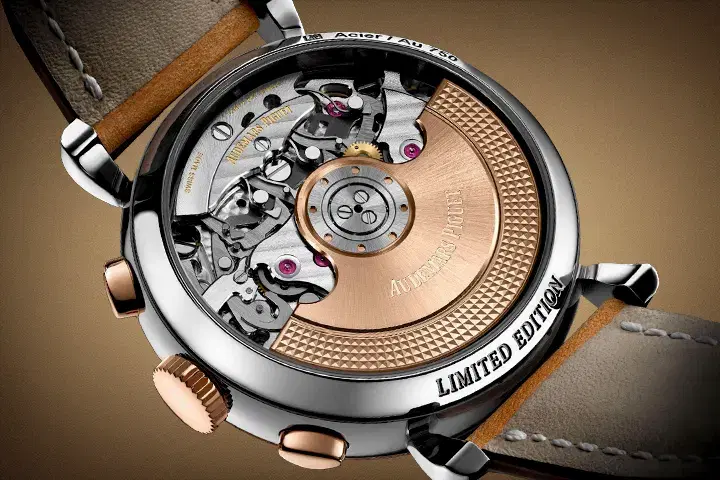The debate over which movement is better—Automatic or Mechanical—has been ongoing for many years now. Many of you think these two watchmaking styles are the same thing. This is where the fundamental concept awaits. You need to understand the engine, also called 'movement,' that powers the watch to decide which style would work best for you!
When you're in the market for a new watch, you'll inevitably encounter terms like 'mechanical', 'automatic', and 'quartz'. While these terms can be confusing for newbies, seasoned collectors may already have their minds wrapped around them.
To begin with, Mechanical watches are widely categorised into two types – 'automatic' and 'manual wind'. Interestingly, despite both being classified as mechanical watches, people often misunderstand the difference between automatic and mechanical.
In this guide, we’ll explore the world of luxury watch movements—both manual wind and automatic mechanical watches—while dispelling the myth that automatic watches are separate from mechanical ones.
By grasping the nuances, you can make an informed decision about the right movement type.
Basics of Mechanical watches
Definition
Mechanical watches are powered by a mainspring, a coiled metal spring that stores energy. The mainspring is wound manually to keep the watch ticking. As the mainspring unwinds, the force from the spring is transmitted through a series of gears and springs to ultimately power the watch and its functions.
This intricate movement of hundreds of small parts makes a mechanical watch tick and sets it apart from its Quartz counterparts, which are powered by batteries.
Key Components:
- Mainspring – It is the power source of a mechanical watch (both automatic and manual), and it stores energy when wound.
- Gear Train – This is a series of gears that transfer energy from the mainspring to the escapement.
- Escapement – A system that controls the flow of energy from the gear train to the balance wheel, ensuring the watch shows accurate time.
- Balance Wheel – A weighted wheel that oscillates back and forth at a steady rate to regulate the watch's timekeeping.
Types of Mechanical Watches
As said above, there are two types of mechanical watches: automatic and manual wind. The key difference between the two is how the mainspring is wound.
1. Automatic
An automatic watch is a self-winding watch that uses the motion of the wearer's wrist to wind the mainspring. This means that as long as you wear the watch on your wrist regularly, it will maintain its movement and power reserve without the need for manual winding.
In addition to the key components found in all mechanical watches, an automatic watch comprises two more things that enable its self-winding capabilities.
- Reverser mechanism: This gear system converts the rotor's bidirectional motion into a single-direction motion that winds the mainspring.
- Rotor – A heavy semi-circular disc rotates when the wearer moves the wrist.

How it works?
When the wearer moves their wrist, the rotor, connected to the watch's movement, rotates by engaging the reverser mechanism. This motion then winds the mainspring of the watch, storing energy to power the movement. A fully wound mainspring will run for a long period before it needs to be wound again.
Advantages:
- The main advantage of an automatic watch is the convenience of a self-winding mechanism. If the watch is worn regularly, you don't have to put extra effort into manually winding it. Hence, it is called 'self-winding' from a broader perspective.
- Automatic watches are best for those who want a low-maintenance timepiece. It doesn't require any battery replacement or daily winding. Just wear it to keep it running.
- Automatic timepieces are ideal for collectors and enthusiasts who wish to appreciate a mechanical watch's fine craftsmanship and heritage without the need for daily winding.
- Automatic watches dominate the marketplace and are more prevalent in modern watch designs.
Disadvantages:
- Due to the hundreds of parts powering the automatic watches, some wearers may notice a slight rotor sound, especially in quieter environments. However, this isn't a very significant problem.
- The inclusion of the various components inside, like the reverser mechanism and rotor, makes the watches slightly thicker and bulkier than their manual-winding counterparts. This is an important consideration for people who prefer a slim watch.
2. Manual Winding
A hand-wound or manual wind watch requires the user to manually wind the mainspring.
How it works?
A manually winding watch is powered by manually turning the crown on the side of the case, typically every 24 to 48 hours daily, depending on the timepiece's power reserve. Basically, how long your fully-wound manual winding watch stays powered depends on the watch's power reserve.
The movement is intricate, with the mainspring working as the central component. Turning the crown clockwise winds the mainspring, and as it is wound up fully, the user feels resistance, indicating the watch has reached its maximum power reserve.
Upon unwinding, the crown provides energy to power the rest of the movement. Only a few turns of the crown will power up the watch, and the coil gets tighter every time you turn it. Remember, overwinding the crown can damage the mainspring or other parts.

Advantages:
- One of the main advantages a user has when using a manual winding watch is the direct connection with the timepiece's power source. Winding the watch manually creates a sense of intimacy with the stunning mechanical piece on your wrist.
- Manual wind watches are a great option for watch enthusiasts who prefer a slim and sleek profile. These types of watches do not require a reverser mechanism or rotor to function and, as a result, are made thinner than automatic watches.
- Many cherish this daily ritual of winding the watch. This way of engaging with the timepiece fosters a deep appreciation for the engineering behind the watch.
- Manual winding pieces are usually preferred by those who appreciate old-school vintage style. In the age of automatic mechanisms, some people still prefer the classic style of manually winding a timepiece and don't need extra convenience.
- Many companies show off the inner workings of a manual wind watch, allowing enthusiasts to appreciate the movement inside.
- Manually wound watches are often cheaper due to the lack of more complicated components inside.
Disadvantages:
- The main drawback of this type is the need for regular winding. What if the user forgets to wind the watch? It will eventually stop running, and you will have to wound and reset the time for the watch to start functioning properly.
- Another big consequence of manually winding watches is the risk of overwinding. While most modern manual wind timepieces come with a built-in mechanism to prevent overwinding, damaging the mainspring or any other part is still possible by overwinding the crown or winding it too frequently.
Comparing Automatic vs. Manual Wind watches
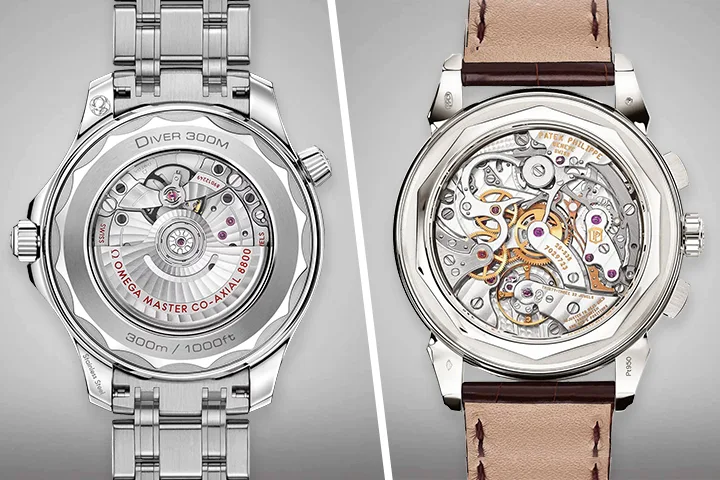
Both automatic and manual wind mechanical watches stand out for their sophisticated styles and durability. Let's compare these two types of mechanical watches to better understand them.
| Key Differences | Automatic | Manual Wind |
|---|---|---|
| Design & Style | Thicker design, bulky appearance | Thinner Profile, Streamlined look |
| Maintenance & Convenience | Less user involvement, Convenient for daily use | Requires manual winding regularly to maintain power reserve |
| Accuracy | Highly accurate & precise | Highly accurate & precise |
Things to Consider When Choosing Between Automatic & Manual Wind Watches
If you cannot decide the type of movement you want, consider the following factors to determine which type of mechanical watch best suits your needs.
Craftsmanship
Are you someone who appreciates the fine engineering and craftsmanship that goes into making a luxury timepiece? If yes, the intricate mechanism behind an automatic watch will surely appeal to you. On the other hand, if you prefer tradition and simplicity, manual wind watches are for you.
Lifestyle
Your lifestyle is one of the most important considerations when choosing between an automatic and mechanical watch. If you have an active or sporty lifestyle, an automatic watch is a more convenient choice as it maintains the power reserve without the need for regular winding. However, if you have a sedentary lifestyle or prefer engaging with your watch regularly and enjoy the technical side of your tools, a manual-wind timepiece is the more appealing pick.
Budget
Budget also plays a role in your decision-making. Automatic watches tend to be more expensive due to the complexity of the self-winding mechanism. Manual wind watches are on the lower end of the price bracket due to the absence of any complicated parts inside. However, things can always vary between these two types of mechanical watches depending on the brand, model, and other features.
Brand Preference
The brand you prefer and the model you choose also play a role in determining which type of mechanical watch is best suited for you. While some brands specialise in either manual wind or automatic watches, others offer both options. So, it is recommended to research the brands and the particular model you're eying on to determine which type of mechanical watch appeals to your taste and aligns with your preferences.
Ultimately, the choice is yours. Whether you want a manual-wound or automatic mechanical watch depends on your individual style, preference, aesthetics, and the level of engagement you desire with the timepiece.
Top Recommendations For Automatic, Manual Winding & Quartz Watches
The world of luxury watches is vast, and many iconic watch brands offer manual wind and automatic watches, showcasing their commitment to innovation, precision and excellent craftsmanship.
If you're looking for the best ones, here are some of the most popular manual and automatic watches from the world's most renowned watch brands.
1. Rolex
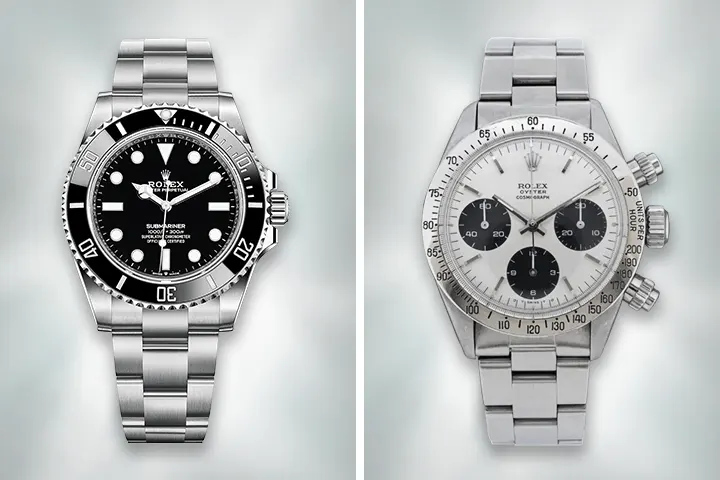
Rolex is a brand that needs no introduction. Anyone who knows anything about luxury watches is well aware that Rolex is the most recognised and respected name in the watch industry. The Swiss company has one of the most diverse collections of luxury watches.
While most Rolex models are automatic, some Rolex models feature manual wind movements and Quartz movements, known as Oysterquartz watches. Upon discovering the surprising facts about Oysterquartz Rolex watches, you'll know why collectors highly prize them.
2. Omega
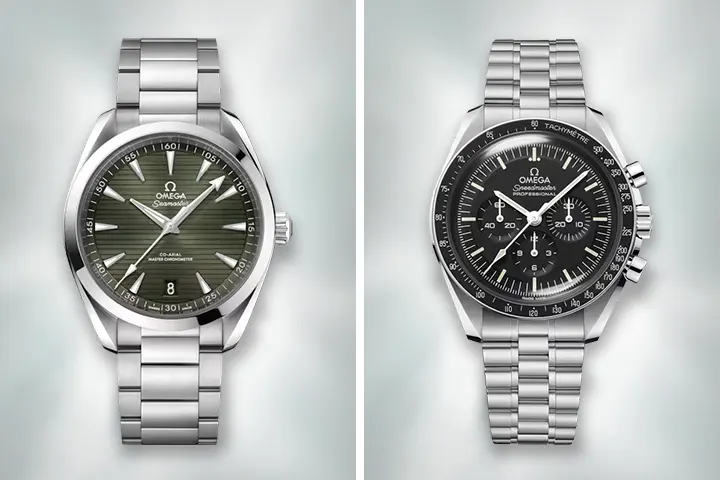
Omega is another highly regarded Swiss luxury watch brand. It is known for its association with the Olympic Games, sending the first watch to the Moon, and much more. Omega provides a wide range of quartz, automatic, and manual wind watches across various collections, each with unique features and functionalities. This is one of the many factors that make Omega watches so expensive.
3. Patek Philippe
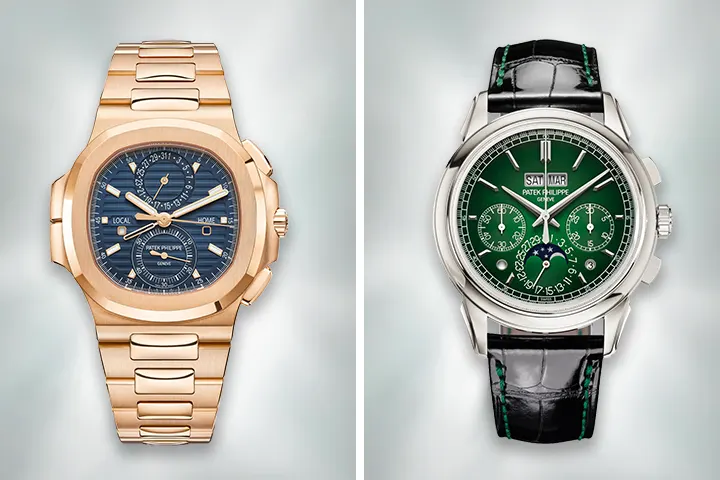
Renowned for creating some of the most iconic watch collections, Patek Philippe is a brand that holds great value, making it extremely coveted by collectors and connoisseurs. The brand produces a range of quartz, manual wind and automatic watches that appeal both aesthetically and functionally.
4. Audemars Piguet

The Audemars Piguet Royal Oak and the Royal Oak Offshore are the two most important collections from the brand. They offer a variety of quartz, manual wind, and automatic watches known for their instantly recognisable designs and marvellous watchmaking. Audemars Piguet watches are great investments, too. Check out five of the best Audemars Piguet watches for investment here.
5. Panerai

Italian luxury watch brand Panerai is popular for its oversized watch designs, which refer to its longstanding maritime heritage. While the brand is known for creating watches featuring automatic movements, there are also Panerai watches with manual wind movements, such as the Panerai Radiomir and Luminor collections.
Final Thoughts: Automatic vs. Mechanical
Many of us grew up knowing that watches are typically of two types: analogue and digital. Then, we got older and realised that an entire world of luxury watches doesn't need a battery to run, and our collective minds were blown!
After exploring the key differences, advantages, and disadvantages of the two distinct types of mechanical watches, we have dispelled the common misconception that automatic watches are different from mechanical watches.
Whether you're new to the watch collection or a seasoned expert, you must understand these distinctions before proceeding. Both types of mechanical watches have captivated enthusiasts for centuries.
So, which movement resonates with you - automatic or mechanical? Irrespective of what you pick, remember you're investing in a piece of timekeeping history that will last ages.

